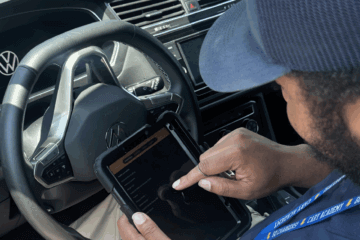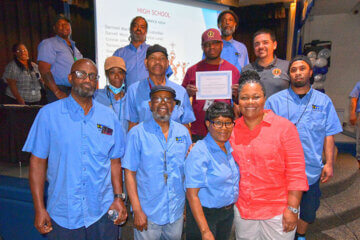Customer experience inspections are a type of specialty inspection that top-notch facilities, janitorial, building, maintenance, and housekeeping teams use to keep a pulse on the physical spaces they care for.
We’ve talked before about other special types of inspections, including high-touch surface audits, process compliance audits, and end-of-shift inspections. Today, we’re taking a deep dive into these customer-focused inspections to explore how they work, how to use them effectively, and how to act on the information your team gathers.
What are CX inspections?
Customer experience inspections (sometimes also called CX inspections) are inspections created and performed with the user’s experience in mind. Teams use these audits to evaluate environments from the perspective of the people who are using the facilities.
Though “customer” is in the name, they might refer to:
- Students in a dormitory
- Patients in a doctor’s office
- Residents of an apartment building
- Shoppers in a retail environment
- Guests at a hotel
- Travelers at the airport
. . . and so on. They seek to measure how the space functions and feels to the people walking in the door — especially the people the building or organization serves.
What line items should be on customer experience inspections?
Standard janitorial and facilities inspections tend to be about the physical condition and appearance of a space. By design, they are very specific in what they seek to measure.
Regular inspections ask questions such as:
- Are the floors mopped and free of debris?
- Is the trash empty and the sides wiped down?
- Are there streaks on the mirror?
By contrast, customer experience inspections focus on how the physical conditions affect a person’s time there. They go beyond the details of cleaning to everything that affects their time in the space.
Examples of line items on a CX inspection could include:
- If there is adequate signage directing a new visitor where to go
- Whether or not the automatic doors are working for wheelchair users
- Whether the temperature beneath the heating vents in a lecture hall would be uncomfortable to sit beneath for a long time
- If a medical office appears clean and hygienic to patients
Therefore, customer experience inspections are not a replacement for traditional inspections, but a supplement delivering new and different insights. They can be a powerful indication of where to best spend limited time and resources: on the items that most affect the people using the space.
CX inspections are highly individualized based on their very nature. We value different things when we walk into different spaces based on why we’re there. In a spa, anything that detracts from comfort will be a huge deal; in a government building, clear signage so people can find the office they need will be paramount.
How should inspectors do CX inspections?
There are two elements to a successful customer experience inspection: inspecting for things that affect the customer’s time in a space which we talked about above), and training inspectors to think through the list from the customer’s perspective.
Another difference between routine and CX inspections? It’s not about just going down the checklist.
Put yourself in the shoes of the person using the facility. Imagine you’re there for a specific reason, and consider what you would notice or care about, even if it’s not on the list. For example, what if you’re walking into the building and have kids with you? What if you have mobility issues and need to avoid stairs? Are signs clear? Is the equipment you need working?
Encouraging your inspectors to think about the purpose of the inspection can help them thoughtfully capture the right insight into how your facilities are operating.
Putting the data to work
Customer experience inspections help the building or organization as a whole understand what’s missing from the customer experience. You may capture information that isn’t in your department’s purview, but may need to be shared.
When LaGuardia Airport implemented customer experience inspections to improve travel through the airport, they had to consider many facets. Their inspectors paid careful attention to whether or not they could navigate the airport successfully, whether sections were accessible for people with disabilities, and even whether restaurants and vendors were adhering to the price limits set for meals and snacks. (Check out our interview with Kim Payne of the Port Authority of New York and New Jersey’s Service Delivery Unit for more insights into the team’s strategy.)
The bottom line
Performing and acting on the data from customer experience inspections is a next-level quality control strategy. By encouraging inspectors to consider the entire customer experience, you’ll get the data you need to help optimize your spaces for the people who live, work, and visit them.
Not using OrangeQC yet? Request a one-on-one demo or start your free 30-day trial to see how refreshingly simple janitorial inspection software can be.



